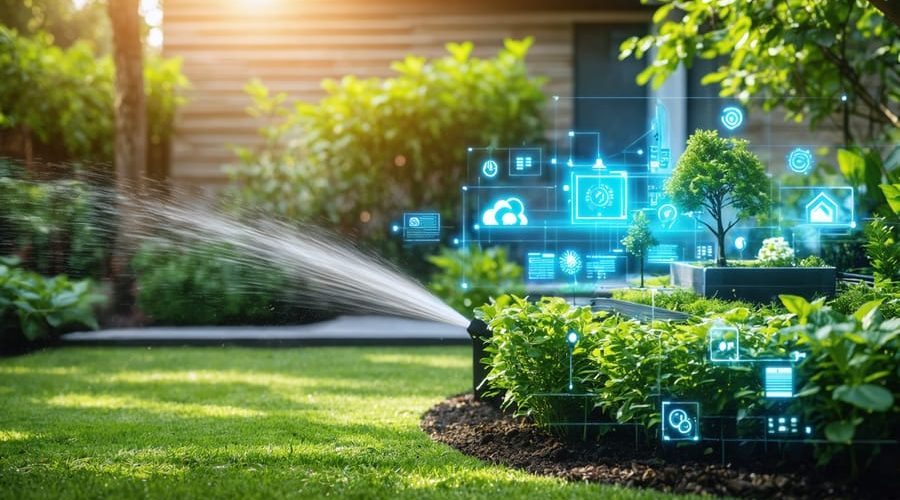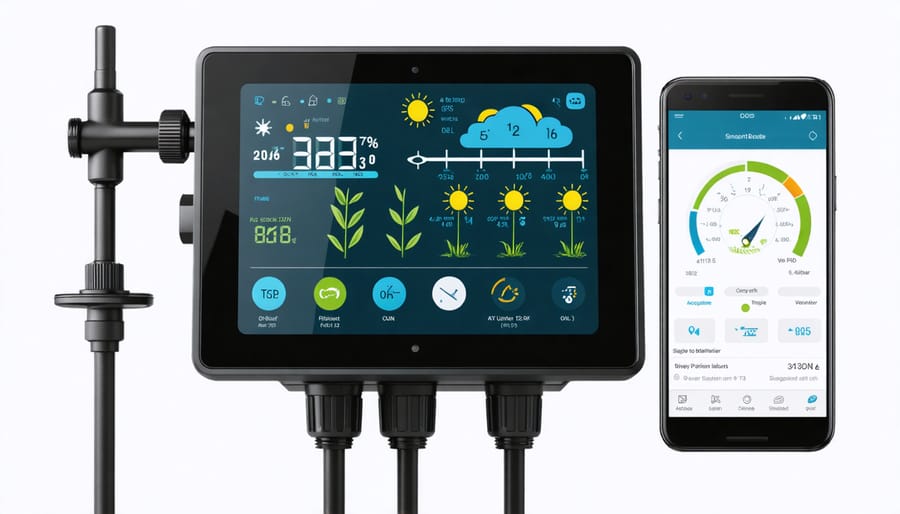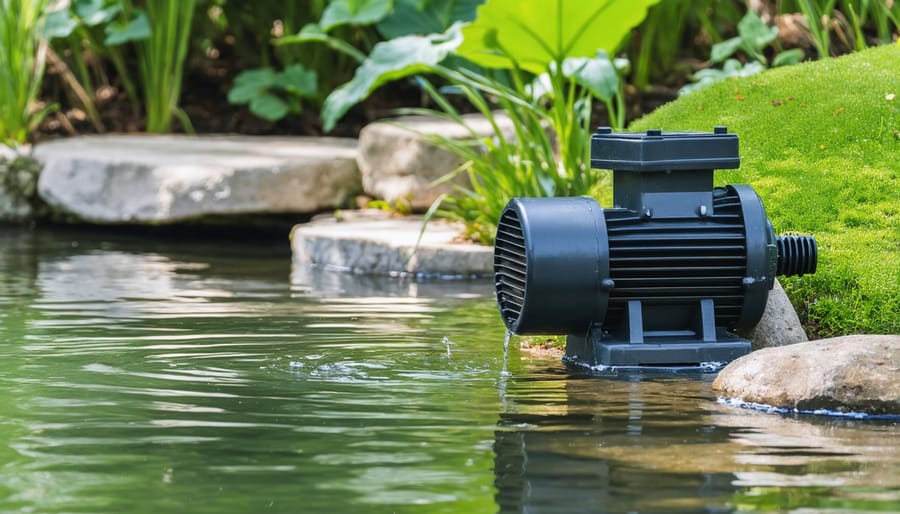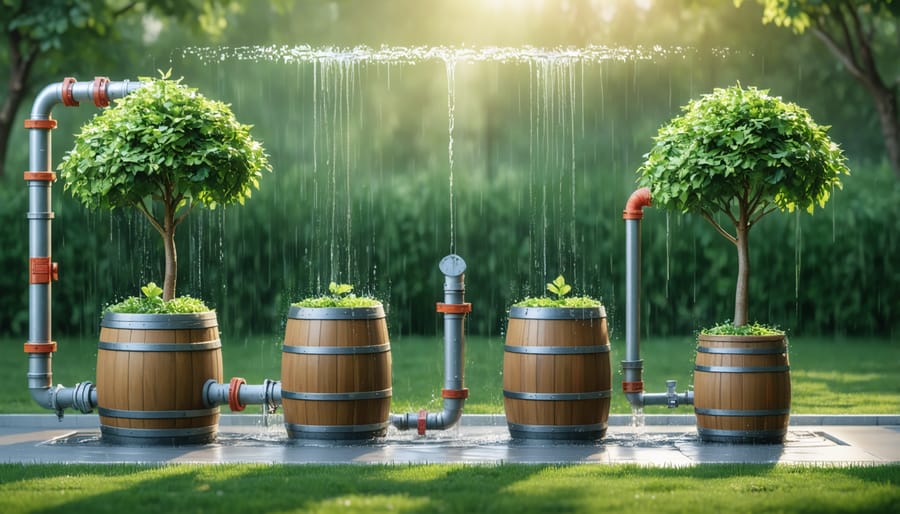
Smart Water Tech That Makes Your Garden Thrive (While Saving Money)
Transform your garden into a water-efficient oasis by combining smart irrigation controllers, moisture sensors, and recycled water systems. Modern water conservation technologies have revolutionized how we create your dream water garden while protecting our most precious resource. From automated drip systems that deliver precise amounts of water directly to plant roots, to innovative rainwater harvesting solutions that capture thousands of gallons annually, today’s gardeners have unprecedented tools to reduce water consumption by up to 50%.
Smart water management isn’t just about high-tech solutions – it’s about understanding how these technologies work together to maximize efficiency. Whether you’re maintaining a small pond or managing extensive water features, implementing these conservation methods helps preserve water resources while keeping your garden thriving. By combining traditional wisdom with cutting-edge technology, modern gardeners can create sustainable landscapes that are both beautiful and environmentally responsible.
Smart Irrigation Systems: The Heart of Water-Efficient Gardens

Weather-Based Controllers
Gone are the days of watering your garden while it’s raining! Weather-based controllers are smart devices that act like your garden’s personal meteorologist. These clever gadgets connect to local weather stations or use built-in sensors to monitor conditions like rainfall, temperature, and humidity in real-time.
When rain is forecast, these controllers automatically skip scheduled watering cycles. On hot, dry days, they might add a bit more water to compensate for increased evaporation. Some advanced models even factor in soil moisture levels and plant types to create the perfect watering schedule.
The best part? Once set up, these controllers work quietly in the background, saving you both water and time. Many can be controlled through smartphone apps, letting you adjust settings from anywhere. Users typically report water savings between 30-50% after installation, making these controllers a smart investment for any water-conscious gardener.
For maximum efficiency, place sensors in open areas away from overhangs, and remember to check the battery levels every few months. Your garden (and water bill) will thank you!
Soil Moisture Sensors
Soil moisture sensors are game-changers for smart water management in your garden. These clever devices act like underground detectives, constantly monitoring how much water your plants actually need. By measuring the moisture content in your soil, they take the guesswork out of watering and help prevent both overwatering and underwatering.
Installing these sensors is surprisingly simple. You’ll place them at root level in different zones of your garden, where they can detect moisture levels right where it matters most. When connected to your irrigation system, they’ll automatically signal when it’s time to water and when to hold off, ensuring your plants get exactly what they need.
Most modern soil moisture sensors come with user-friendly apps that let you monitor soil conditions right from your smartphone. You can track moisture levels, set custom thresholds, and receive alerts when your garden needs attention. Some advanced systems even factor in weather forecasts and adjust watering schedules accordingly.
The benefits are impressive: gardens using soil moisture sensors typically reduce water usage by 30-50%. Beyond water savings, your plants will thrive with consistent, optimal moisture levels. No more yellow leaves from overwatering or wilting from drought stress!
For best results, place sensors in areas with different soil types or sun exposure, as water needs can vary significantly across your garden. Start with a few key zones and expand the system as needed. While there’s an initial investment, the water savings and healthier plants make these sensors well worth considering for any water-conscious gardener.
Remember to check and calibrate your sensors occasionally to ensure they’re working correctly. With proper maintenance, they’ll help you maintain a beautiful, water-efficient garden for years to come.
Recirculation Systems That Pay For Themselves

Energy-Efficient Pumps
Modern energy-efficient pumps are revolutionizing the way we maintain our eco-friendly water features while significantly reducing electricity consumption. These smart pumps use advanced technology to adjust their power output based on actual demand, rather than running at full capacity all the time.
Variable-speed pumps are leading this innovation, offering up to 80% energy savings compared to traditional single-speed models. They work by automatically detecting the required flow rate and adjusting their speed accordingly. For example, when your waterfall needs less flow during quiet evening hours, the pump automatically reduces its power consumption.
Solar-powered pumps are another game-changer for water gardeners. These systems can run entirely off-grid, using stored solar energy to keep your water features flowing even after sunset. Many models now come with built-in sensors that monitor water levels and adjust flow rates to prevent wastage.
The latest smart pumps also feature user-friendly controls, often with smartphone connectivity, allowing you to monitor and adjust settings remotely. This means you can optimize your pump’s performance whether you’re at home or away, ensuring your water garden runs efficiently while keeping your energy bills in check.
Advanced Filtration Methods
Modern filtration systems have revolutionized how we maintain your pond’s water quality while conserving precious resources. These innovative solutions combine mechanical, biological, and chemical filtration processes to maximize water efficiency and reduce waste.
Multi-stage filtration systems are leading the charge in water conservation. These systems start with mechanical filters that trap larger debris, followed by biological chambers where beneficial bacteria break down harmful compounds. The final stage often includes specialized media that removes fine particles and chemical impurities, resulting in crystal-clear water that requires fewer changes.
UV clarifiers have become game-changers in water conservation efforts. By eliminating algae and harmful microorganisms, these devices significantly reduce the need for frequent water changes and chemical treatments. When paired with protein skimmers, they create a powerful combination that extends water life by removing organic waste before it breaks down.
Smart filtration systems now feature automated backwashing capabilities that clean filters using minimal water. These self-cleaning mechanisms ensure optimal filter performance while conserving water that would typically be wasted during manual cleaning processes. For DIY enthusiasts, adding a pre-filter sponge to your existing system can dramatically improve efficiency and reduce maintenance frequency.
Leak Detection and Prevention Tech
Smart Leak Detectors
Smart leak detectors are game-changers for water conservation in your garden. These clever devices connect to your water system and act like watchful guardians, monitoring water flow 24/7. They learn your typical water usage patterns and can spot unusual activity that might indicate a leak.
Most smart detectors easily attach to your main water line or specific garden features. They use sensors to measure water pressure and flow rates, sending real-time alerts to your smartphone when something’s amiss. Imagine getting a notification about a broken sprinkler head while you’re at work – you could shut off the water remotely before coming home to a flooded garden!
These devices can detect even tiny leaks that might otherwise go unnoticed for months. Some models can identify specific issues, like pipe bursts or frozen pipes, and many can automatically shut off your water supply to prevent damage. The best part? Many smart leak detectors can help you track your water usage over time, giving you insights to make smarter decisions about your garden’s water consumption.
For DIY enthusiasts, installation is usually straightforward, requiring basic plumbing knowledge and about an hour of your time.
Auto-Shutoff Systems
Auto-shutoff systems are game-changers when it comes to preventing water waste in your garden. These smart devices use sensors to detect unusual water flow patterns or leaks, automatically cutting off the water supply to prevent costly damage and wastage. Think of them as vigilant guardians for your water features!
Most modern auto-shutoff systems can detect even small leaks by monitoring water pressure and flow rates. When they notice something unusual – like a sudden pressure drop or continuous flow during odd hours – they spring into action, shutting off the water supply and sending an alert to your smartphone.
For pond owners, these systems are particularly valuable. They can prevent your pond from overflowing during heavy rains or emptying out if a pipe bursts. Some advanced models even learn your typical water usage patterns over time, making them more accurate at detecting genuine problems versus normal water use.
Installation is usually straightforward, with many systems designed for DIY setup. They typically connect to your main water line and can be integrated with your existing irrigation system or water features. While the initial investment might seem significant, the water savings and peace of mind make it worthwhile.
DIY Water Conservation Projects

Building a Rain Harvesting System
Building a rain harvesting system is a rewarding DIY project that can significantly reduce your water consumption. Let’s create a basic system that’s perfect for garden irrigation.
Start by selecting a suitable downspout from your roof. This will be your main collection point. Install a diverter near the top of the downspout to redirect rainwater into your collection system. You’ll need a food-grade barrel or tank with a capacity of at least 50 gallons – larger is better if you have the space.
Place your barrel on a sturdy, level platform made of concrete blocks or pressure-treated lumber. The platform should be at least 12 inches high to allow for gravity-fed watering. Install a tight-fitting lid with a mesh screen to keep out debris and mosquitoes.
Add a spigot near the bottom of the barrel for easy access to water. Don’t forget an overflow pipe near the top to direct excess water away from your home’s foundation. Connect a garden hose to the spigot, and you’re ready to use your collected rainwater!
For maximum efficiency, consider linking multiple barrels together using connection kits. This creates a larger storage capacity and helps you make the most of heavy rainfall events. Remember to clean your gutters regularly and check the screen for debris to keep your system running smoothly.
During winter in cold climates, drain the system to prevent freezing damage. With proper maintenance, your rain harvesting system can provide free water for years to come!
Setting Up Grey Water Systems
Setting up a grey water system in your garden doesn’t have to be complicated. Start by identifying sources of grey water in your home – typically from bathroom sinks, showers, and washing machines. The simplest DIY setup involves redirecting washing machine discharge water through a food-safe hose to your garden beds.
Begin by disconnecting your washing machine’s drain hose from the main sewer line. Attach a long, garden-safe hose to direct the water where you want it. Remember to use plant-friendly laundry detergents to protect your garden. You can also install a three-way valve to switch between garden irrigation and regular drainage during winter months.
For sink and shower water, consider installing a branching pipe system. Place a collection barrel beneath your sink’s drain pipe, adding a filter to catch hair and debris. From there, run gravity-fed irrigation lines to your garden. Always ensure pipes have a slight downward slope to prevent water from pooling.
Important safety tips: Never store grey water for more than 24 hours, as it can develop bacteria. Keep all pipes clearly marked and separate from drinking water systems. Avoid spraying grey water on edible parts of plants, and direct it only to soil or mulch. During rainy seasons, redirect grey water to regular drainage to prevent waterlogging.
This simple system can save hundreds of gallons of water annually while keeping your garden lush and reducing your water bill.
Water conservation technology has come a long way, offering exciting solutions for every garden and budget. From smart irrigation controllers that adjust to weather conditions to simple rain barrels that capture nature’s bounty, there’s a water-saving option for everyone. By implementing these technologies, you can reduce your water consumption by up to 50% while maintaining a thriving garden.
Remember, every drop counts. Whether you choose to invest in high-tech solutions like moisture sensors and smart sprinkler systems, or prefer DIY approaches like mulching and drip irrigation, you’re contributing to a more sustainable future. The key is to start small and gradually expand your water conservation efforts as you become more comfortable with the technologies.
Consider beginning with a simple rain barrel or soil moisture meter, then progress to more advanced systems as your confidence grows. The initial investment in water conservation technology typically pays for itself through reduced water bills within one to two years. Plus, you’ll have the satisfaction of knowing you’re helping protect our planet’s most precious resource.
Take the first step today – your garden (and our environment) will thank you for it!
